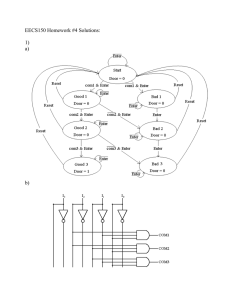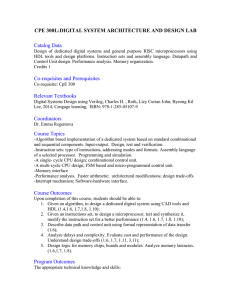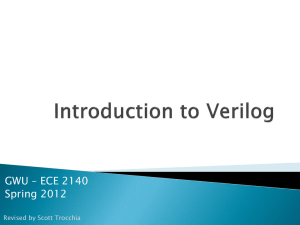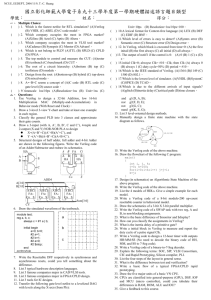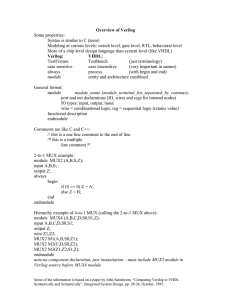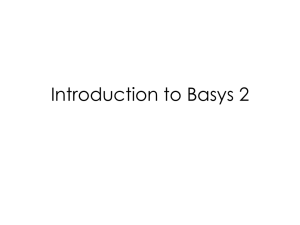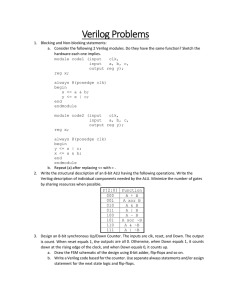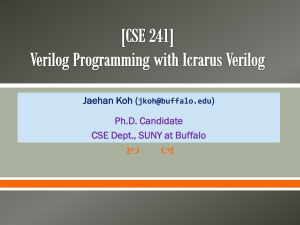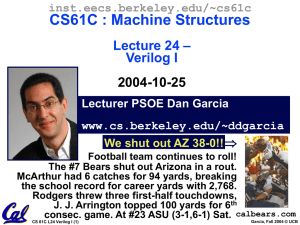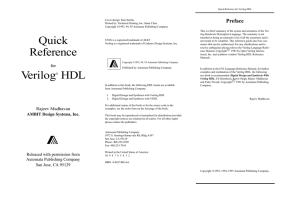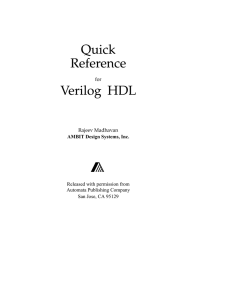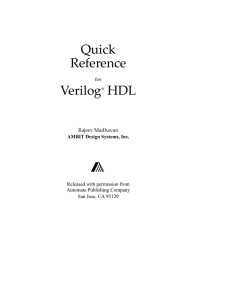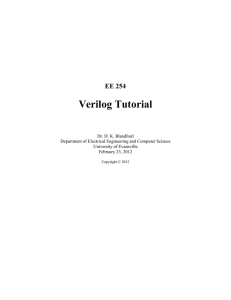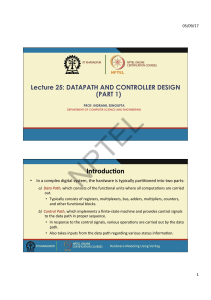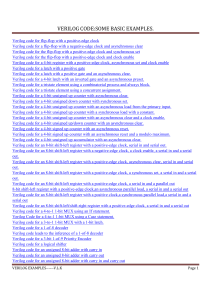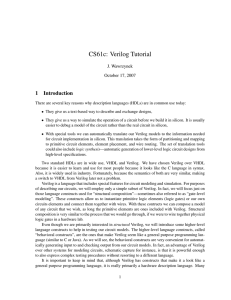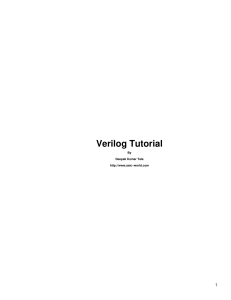Verilog-HDL
advertisement
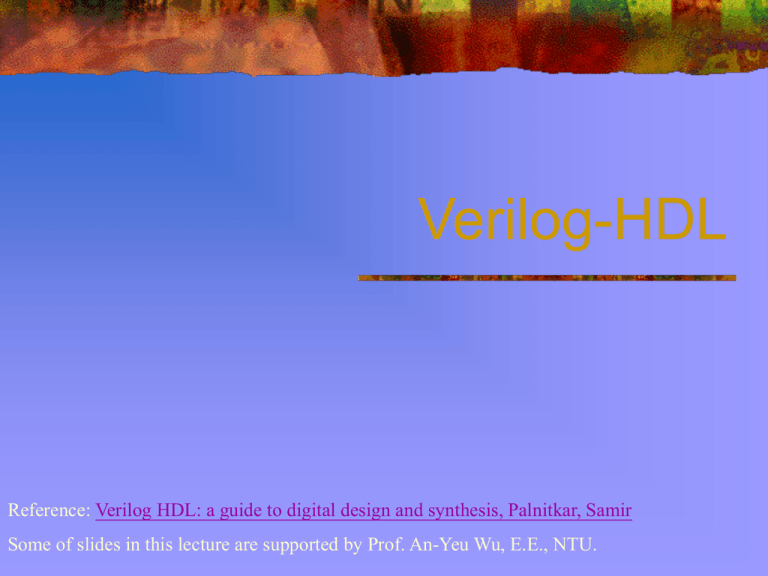
Verilog-HDL Reference: Verilog HDL: a guide to digital design and synthesis, Palnitkar, Samir Some of slides in this lecture are supported by Prof. An-Yeu Wu, E.E., NTU. OUTLINE Introduction Basics of the Verilog Language Gate-level modeling Data-flow modeling Behavioral modeling Task and function Verilog HDL (continue) • Invented by Philip Moorby in 1983/ 1984 at Gateway Design Automation ( Prabhu Goel, President ) • Enables specification of a digital system at a range of levels of abstraction: switches, gates, RTL, and higher • Initially developed in conjunction with the Verilog simulator Verilog HDL • Verilog- based synthesis tool introduced by Synopsys in 1987 • Gateway Design Automation bought by Cadence in 1989 • Verilog placed in public domain to compete with VHDL – Open Verilog International (OVI) IEEE 1364 1995 and revised version IEEE 1364 -2001 revised version IEEE 1364 -2001 What is Verilog HDL ? Mixed level modeling Behavioral Structural Algorithmic ( like high level language) Register transfer (Synthesizable) Gate (AND, OR ……) Switch (PMOS, NOMS, JFET ……) Single language for design and simulation Built-in primitives and logic functions User-defined primitives Built-in data types High-level programming constructs Basic Conventions Verilog is case sensitive – Keywords are in lowercase Extra white space is ignored – But whitespace does separate tokens Comments – One liners are // – Multiple lines /* */ – Comments may not be nested OUTLINE Introduction Basics of the Verilog Language Overview of Verilog Module Identifier & Keywords Logic Values Data Types Numbers & Negative Numbers Gate-level modeling Data-flow modeling Behavioral modeling Task and function Overview of Verilog Module Test bench Basic unit --Module module module_name (port_name); port declaration data type declaration module functionality or structure Endmodule D-FlipFlop module D_FF(q,d,clk,reset); output q; //port declaration input d,clk,reset; // data type declaration reg q; always @ (posedge reset or negedge clk) if (reset) q=1'b0; else q=d; endmodule Instance A module provides a template which you can create actual objects. When a module is invoked, Verilog creates a unique object from the template The process of creating a object from module template is called instantiation The object is called instance Instances module adder (in1,in2,cin,sum,cout); ....... endmodule module adder8(....) ; Mapping port positions adder add1(a,b,1’b0,s1,c1) , add2(.in1(a2),.in2(b2),.cin(c1),.sum(s2) ,.cout(c2)) ; ..... endmodule Mapping names T-FlipFlop module T_FF(q,clk,reset); output q; input clk,reset; wire d; D_FF dff0(q,d,clk,reset); // create an instance not n1(d,q); endmodule Identifier & Keywords Identifier User-provided names for Verilog objects in the descriptions Legal characters are “a-z”, “A-Z”, “0-9”, “_”, and “$” First character has to be a letter or an “_” Example: Count, _R2D2, FIVE$ Keywords Predefined identifiers to define the language constructs All keywords are defined in lower case Cannot be used as identifiers Example:initial, assign, module, always….

